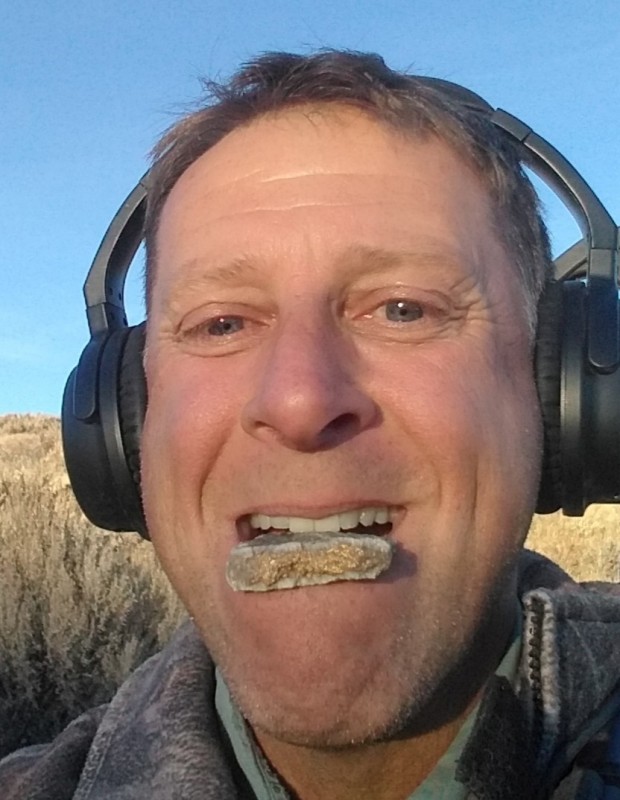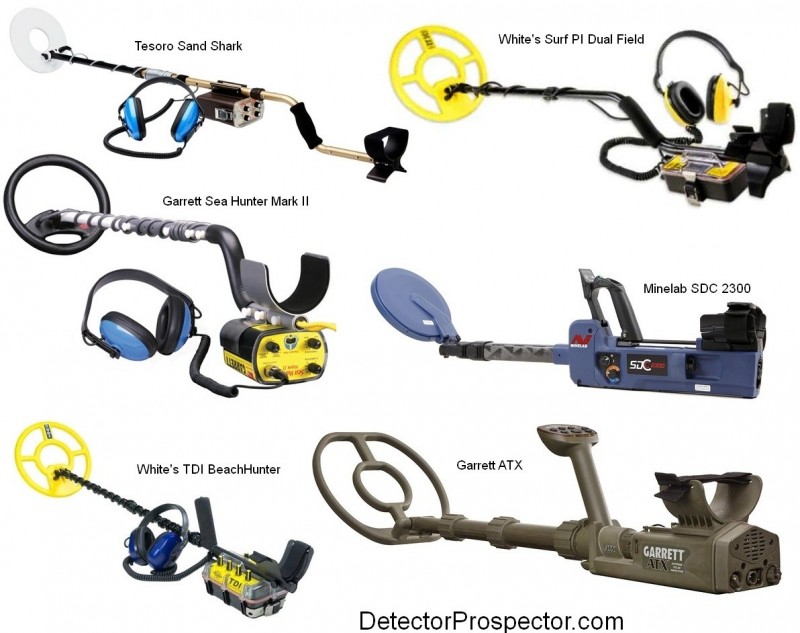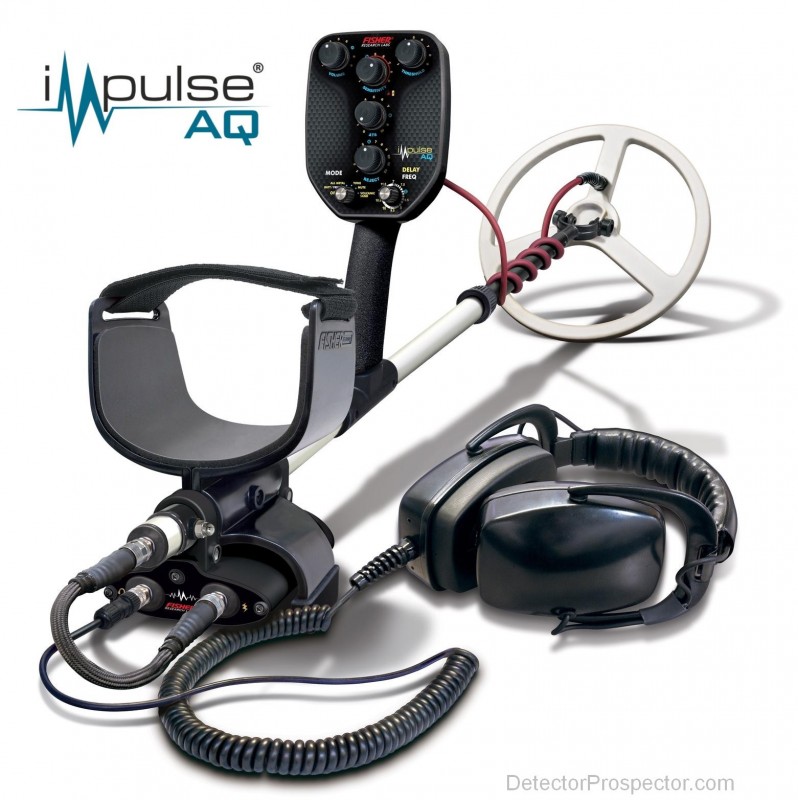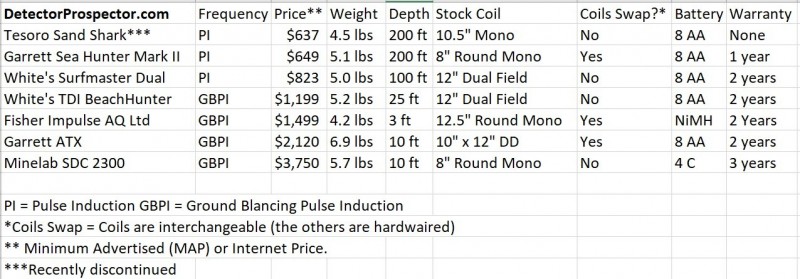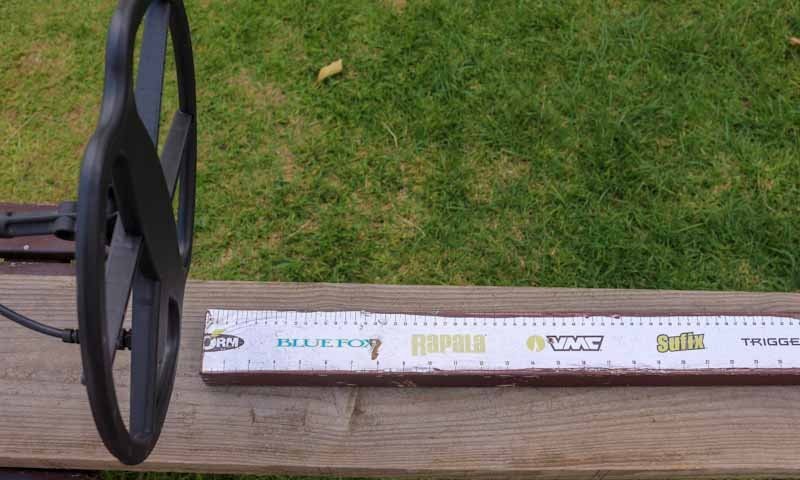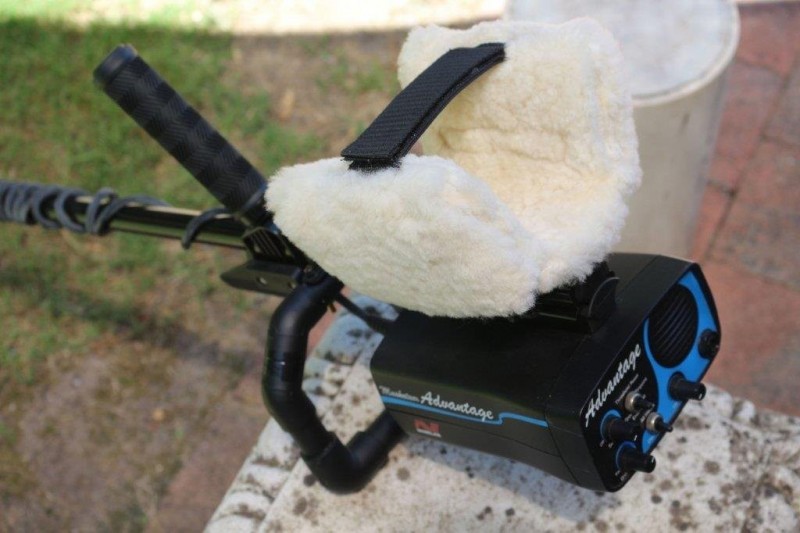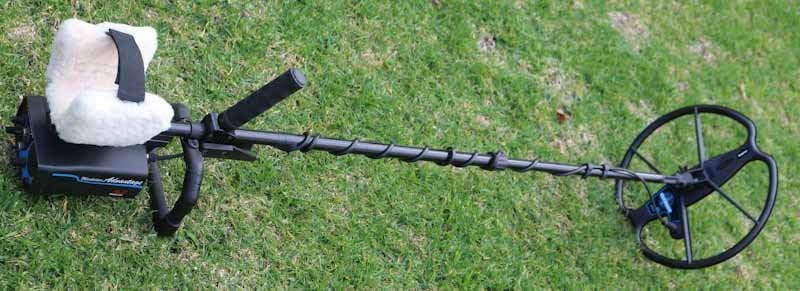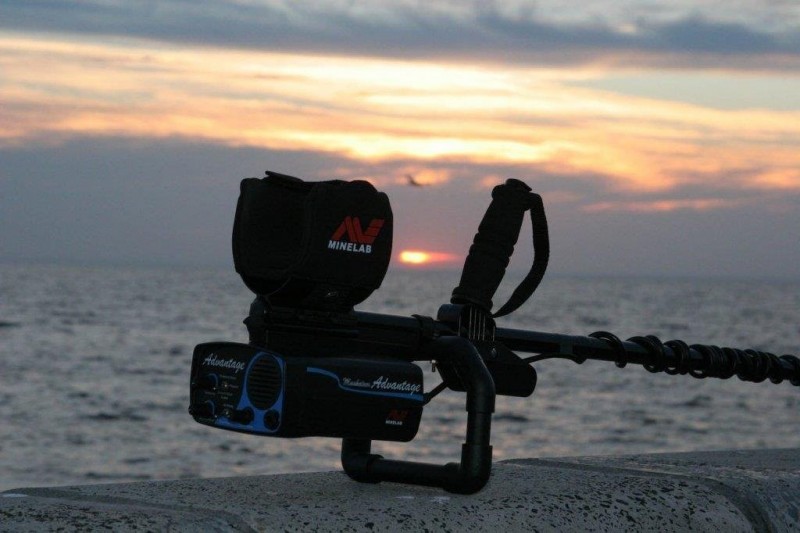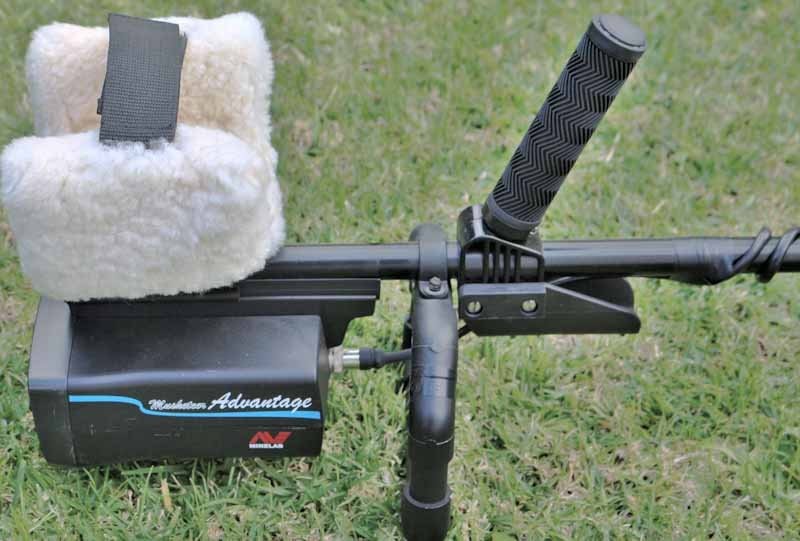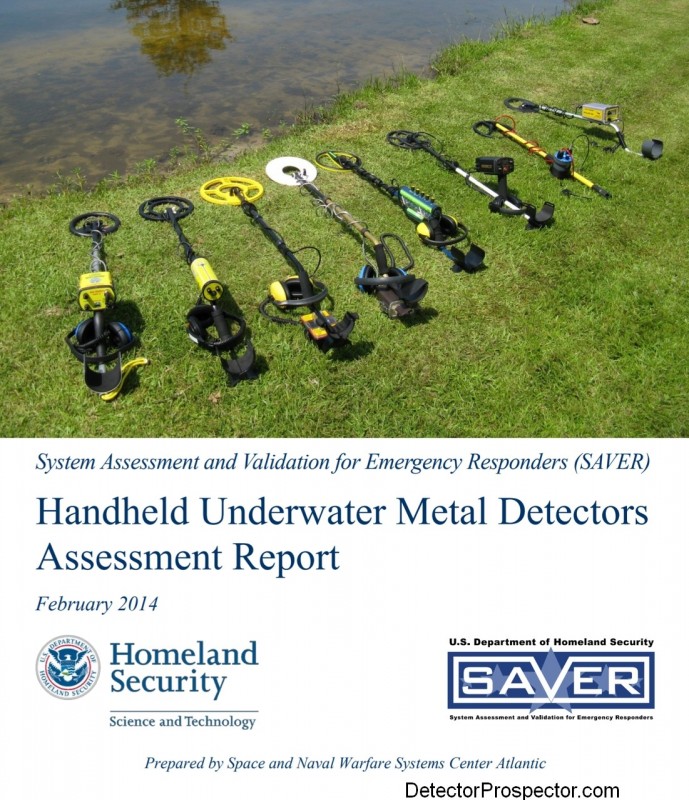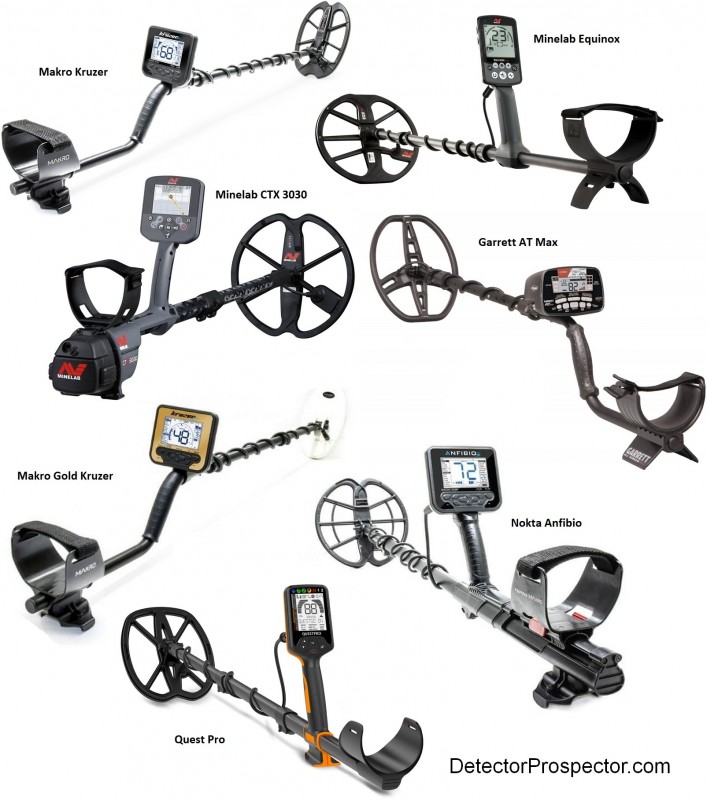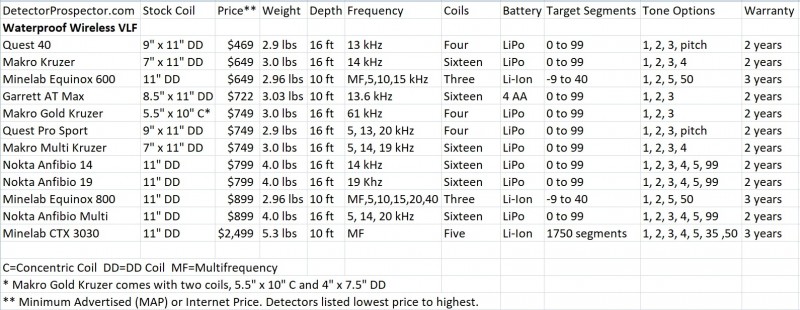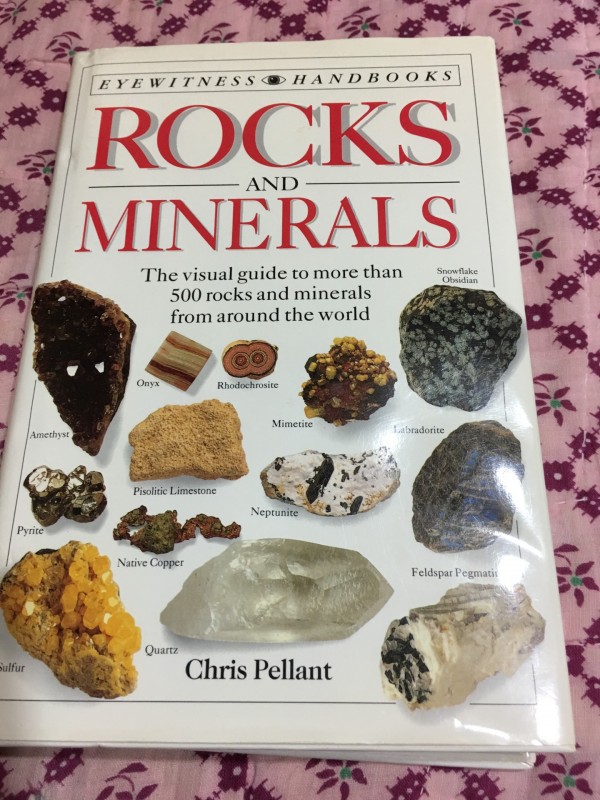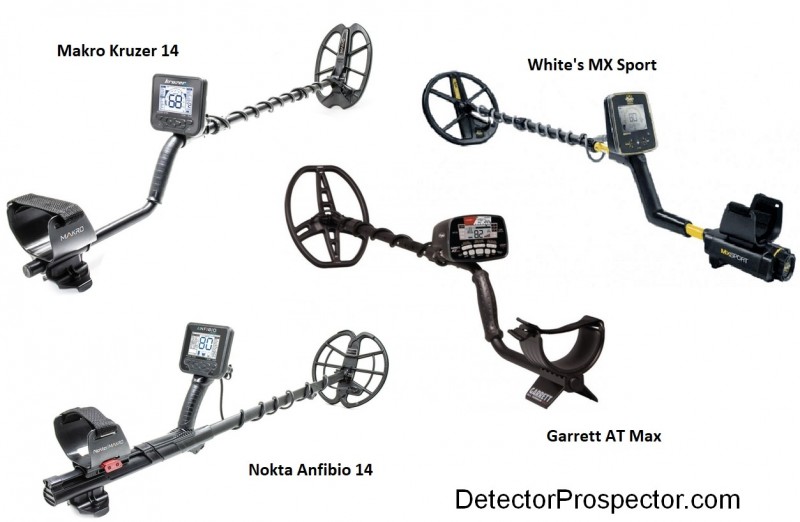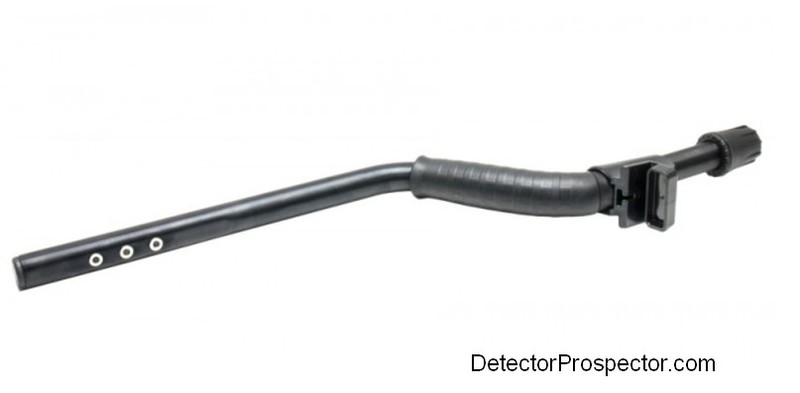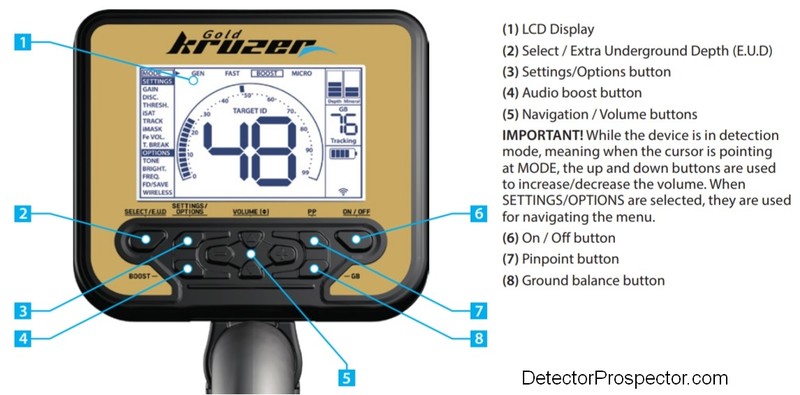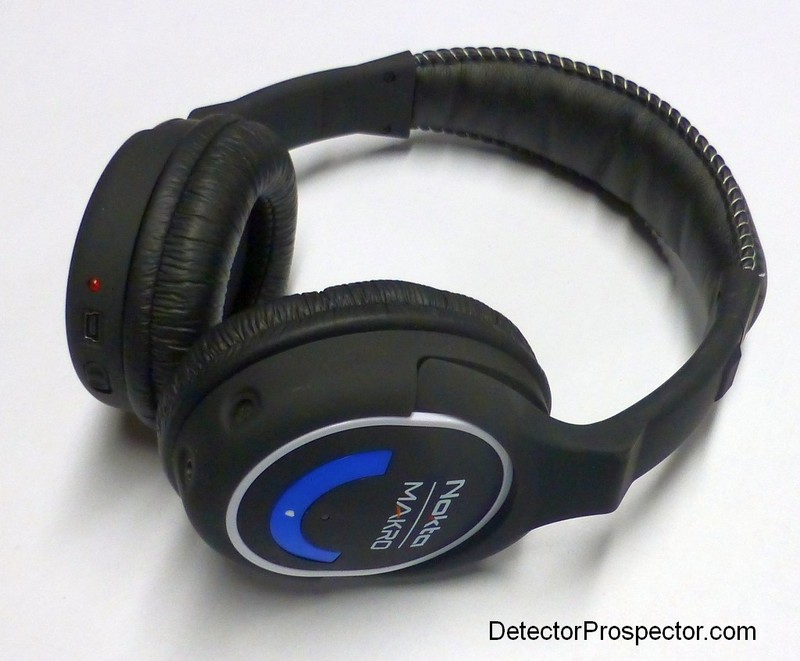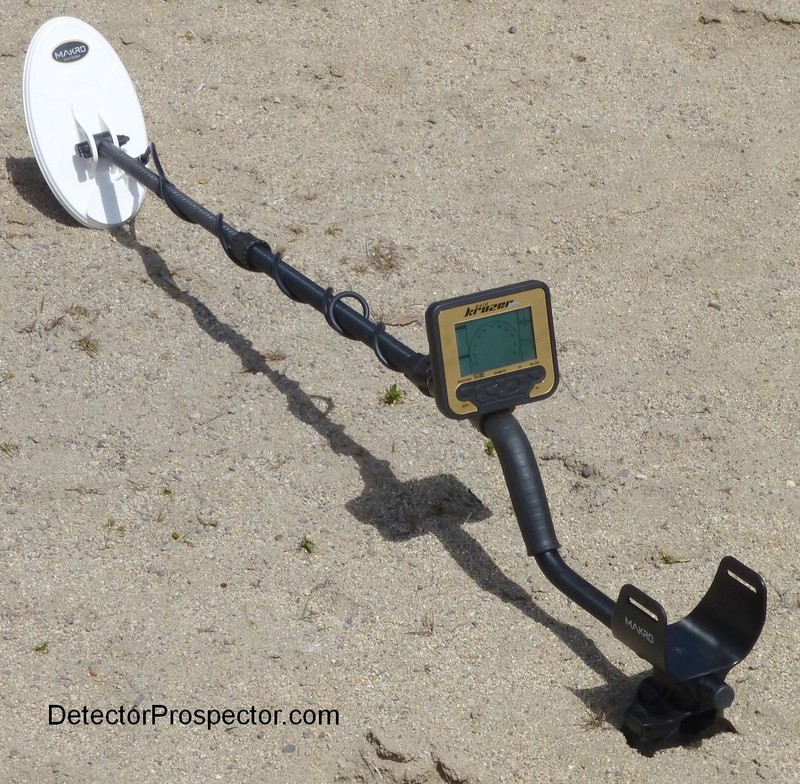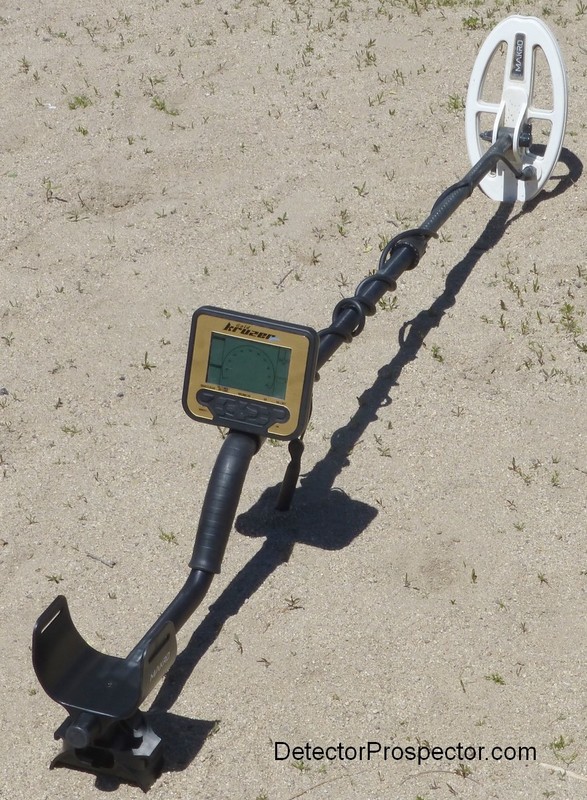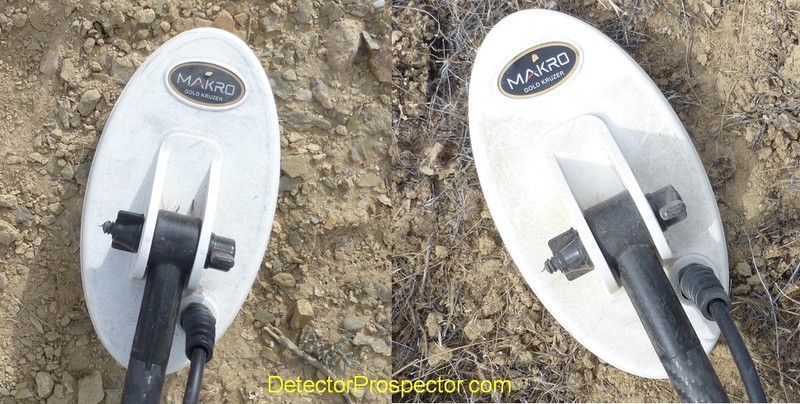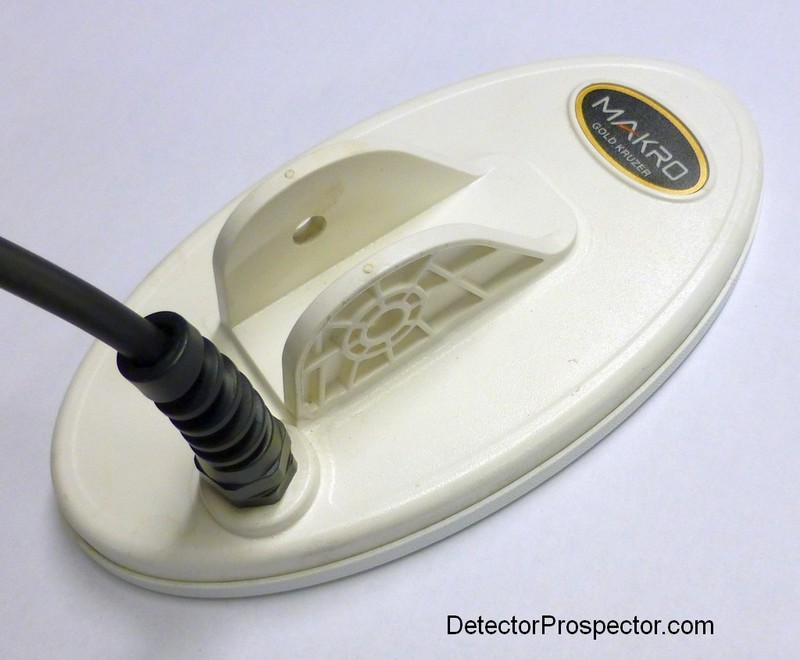Search the Community
Showing results for tags 'detector review'.
-
Hello from Canada! Long time lurker here from Canada reading up on many many pages on here (and others) on detectors and needed some advice/user experiences that people have had (and thank you in advance as i appreciate any reply taking the time to do so!). This would be a first time detector for me and ideally i would like to spend around $400usd and can maybe stretch it to $600-800usd if i wait, although i'd really like ideally something in the $400 range. My primary use would be for small tiny gold nuggets in my area (~0.1g-~1/2g) mainly hunting placer gold in rivers/riverbeds, and some relic/coin hunting on the side if possible with coil swaps. A couple of detectors that made my short list: -Bounty Hunter Time Ranger (non pro) ~$300usd (Pros: comes with 8-inch search coil and 4-inch Gold Nugget coil Cons: Operating frequency 6.6 kHz) Seems like it can get the job done and used for both gold nuggets and coin/relics, price hard to beat, only downside is the 6.6 khz on smaller nuggets i think. -Minelab Vanquish 440 ~$300usd (Pros: Multi IQ Frequency 5-40khz Cons: Not specifically designed for nugget hunting, no small 4-5" coils) Also seems like it could get the job done with the v8 coil although more geared towards coin/relic, still with possibly playing with sensitivity and no discrimination could be a viable option and was thinking about this one heavily. -Fisher Gold Bug 2 ~700usd (Pros: 71khz frequency Cons: Specifically designed for gold nugget hunting, high price, not multi versatile as not many coils) On the higher end of the budget with price, not really versatile in the sense that i can only really use it for nugget hunting, on the other hand excels at nugget hunting but that's all. -Minelab Gold Monster 1000 ~700usd (Pros: 45khz frequency Cons: Pretty much the same as the Gold Bug 2) Again high end of the budget, same as gold bug 2 except lower khz but easier to use. -Minelab Explorer 2 ~300usd used! (Pros: 1.5khz-100khz, multiple coils Cons: Discontinued, Not designed for nugget hunting) I found a user Minelab Explorer 2 that comes with a carbon fiber shaft, 10" coil, 7" coil, 2 battery packs! I think for the price it's a steal! I also read that although general consensus is that it can't do gold nuggets, however a couple people had tweaked the settings and were still able to pick up nuggets that were as small as 2grain (0.1gram) with small coils! Please let me know what you guys think would be a good fit, as well as any others that you can think off, and again thank you in advance for reading this and replying!
-
As a very fortunate and experienced gold hunter who has had my share of success with a variety of gold detectors and found my share of heavy metal, I get asked this question all the time. Yes I have my favorite but will not share it at this moment. The reality is, there is no "the best", for all situations and or people. What I'd like to see, hear and read is your input and answers. No wrong answers as this is your opinion. In fact, even those who have yet to find gold with your detector, your input is wanted. After all, why did you decide on the model you own? Was it price, features, weight, depth, warranty, or referral from a friend? There are many to choose from. Just off the top of my head, I can think of 20+ different current models of gold detectors. Surprisingly each manufacture makes more than 1 so there is a reason. Some on here are well known salty pros, others are seasoned veterans and quite a few accomplished rookies. Now with the price of gold we are seeing a new run of wantabees. Realize everyone's experience is different, so please also mention your level at gold hunting with a detector. Thanks for sharing your time, input, thoughts and knowledge. Me personally, I've been chasing Au for 25 yrs. Again, I'll mention my favorite at a later time.
-
The waterproof pulse induction field is very limited at this time. It divides into two classes. Pulse induction metal detectors that ground balance, and those that do not. A pulse induction (PI) detector by its nature tends to ignore mineralization, so much so that in milder conditions a PI works fine without a ground balance circuit. As I noted above however a PI is not immune to mineralization. A non-ground balancing PI detector will sound off when raised and lowered over true black sands. The more concentrated the magnetite, the more intense these signals will be. The bottom line is that on real bad black sand beaches even a basic pulse induction will sound off if the coil height is varied too rapidly over the beach. In the water with troughs and depressions false signals are all but impossible to avoid. The most extreme situations require a ground balancing pulse induction (GBPI) metal detector. Pure white non-magnetic coral beaches - most any detector will work well Even a hint of mineralization - a multifrequency detector has an edge over single frequency VLF where there are both saltwater and magnetic minerals. Moderate mineralization - you want multifrequency or pulse induction. Severe mineralization - at some point a ground balancing PI (GBPI) is required. The above conditions grade from one into the other seamlessly. Hot rocks are a wild card as hot rocks in a normally mild beach can cause false signals on a PI detector that lacks ground balancing capability. Finally, I should note that PI detectors with ground balancing capability have a crude sort of tone discrimination that can be used to advantage. Fully submersible pulse induction metal detectors Here are the current mainline waterproof PI detector offerings: Bounty Hunter - no PI Garrett - Sea Hunter Mark II (PI) and ATX (GBPI) Fisher - Impulse AQ Minelab - SDC 2300 (GBPI) Nokta/Makro - no PI Teknetics - no PI Tesoro - Sand Shark (PI) (Discontinued) White's - Surfmaster Dual Field (PI) and TDI BeachHunter (GBPI) XP - No PI Finally, here are the key specifications for comparison: Fully submersible pulse induction metal detectors
-
I've been updating this guide for almost twenty years now. It started back when there was little to offer in way of objective opinions on gold nugget detectors. That's not so much this case these days, but this is still the most comprehensive roundup available, along with some admittedly personal opinions about the models. These days we honestly have almost too many options, which can be confusing for beginners. So a few years ago I added my own short list of three models I recommend as safe picks for anyone around the world. The list was updated mainly to change my notes on the various Fisher 19 kHz models, where oddities in the First Texas marketing have now left the Gold Bug models high and dry as other FT 19 kHz models are available with better prices. I added warnings that the Minelab X-Terra 705 and GPX 4500 are in the process of being closed out and discontinued. Also added a big warning up front about counterfeit detectors - very common now in the nugget detector world. See the full guide here
-
This is for those of you who may be wondering about purchasing an induction balance gold prospecting detector using mid to higher frequencies or just for the curious. I had a chance to do some comparison testing with the detectors below. Sorry, I did not have access to a Goldmonster 1000 or a Fisher Gold Bug 2. These are outdoor air tests in thick EMI and cold temperatures, 28F. I tried to set these up as close as possible, but coil size, DD or Concentric, and EMI susceptibility were out of my control. The detectors were placed on the ground with the coils perpendicular to the ground and each coil made contact with the ground at its heel. All detectors were ground balanced and noise cancelled or frequency shifted for the best possible EMI protection. The only detector that was really handling the EMI well was the 24K. I actually could have run it at maxed out settings, but to be fair I lowered them a bit to try to match the other detectors. Also included is one depth test for these detectors using each detector's coin/ jewelry mode that was used in the air test. This depth test is for a 5" deep US nickel (no snickering please since the Deus and ORX mineralization bars are 3/4 full or more in my dirt). This nickel has been buried for 2 years and currently the ground is frozen. So, these are tough conditions. From my experience with these detectors their air test results here (due to EMI) are very close to actual in the ground results within an inch or so depending on mineralization levels of course. Please notice the coil sizes used in the test before making a judgement. I'm not trying to start an argument here. I like all of these detectors very much and they are all excellent gold prospecting detectors. This is for reference ONLY. Your results may vary a lot!!!!!!
-
The passing of a friend unfortunately has led to me taking ownership of a modified Tdi Pro. My machine is mounted on an Anderson shaft and is factory spec. My old mate had his machine modified to smooth out the threshold and to add some sensitivity. The specifics related to the modifications are not known by me, other than that they were conducted by 'Luke'..Oz Digger.. This happened some time ago. So the modified machine is probably not a keeper, I don't want two Tdi Pro machines.. The opportunity to do a comparison cannot and should not be ignored. My intention is to focus on small gold performance, the threshold smoothness, the ability to use gain, basic performance and handling characteristics under different circumstances. The machines will use the same fully charged battery pack, same coil, same targets, same test location and conditions on the same day etc. Trying to minimise external variations. I'll start with the usual useless air test. Later I'll follow up with in ground testing on the actual goldfields in mineralized soil. Test coils will be with a small coil and a large coil. Targets will be gold only. The 1 grain ingot, the half gram gold coin, a half sovereign gold coin. Some real small sub gram nuggets to see how small we can go.. There is a process involved so I'll take my time and do it right. Any specific questions or suggestions, speak now or forever hold you peace.. I'm only doing this once. Once it sold it will be too late to revisit.. All the best.
- 33 replies
-
- 6
-

-
- australia
- detector review
-
(and 1 more)
Tagged with:
-
Most of us have had several detectors in our hunting careers. Some have been good to us and we've paid for the detector many times over. Other detectors have been so so. I'm going to make a list of detectors that I own or owned and say which ones paid for themselves. Some of this depends on just getting better or lucky at detecting and some depends on the detector itself. I'm trying to give maximum credit to the detector. GOLD DETECTORS Minelab 5000 Yes Minelab 2300 No Minelab 7000 No Gold Bug Pro No BEACH AND RELIC DETECTORS White's 6000 Di Pro No Minelab SE Pro Yes CTX 3030 Yes Minelab Equinox Yes
-
For a long time my Minelab Musketeer Advantage was my top dry sand beach detector. It ate up large areas of sandy beach quickly, key factors were speed combined with depth. Decent disc, mated with that strong good target signal compared with the 'spitty' disapproval of trash.. simple audio no meters etc, fast and efficient. An Explorer Se Pro handled the wet sand until the White's Tdi took over that role. The old Musky sat unused for a long time whilst the Xl Pro and MXT saw plenty of action. The purchase of a Ultimate 13 coil has rekindled an old love affair and breathed new life into the Musky. Good size and performance combined with light weight has turned into a winning combination. This rig balances beautifully and the coil feels as if it is floating in the air, the detector is weighty but the balance more than compensates. With the Musky mounted on a GPX upper and under the sheepskin cuff, balance is perfect. Switches have rubber boots to keep sand out and the machine is off the ground on a DIY stand. I only use it on the dry beach sand, sports fields, parks or other low to medium trash areas covering large areas. This setup just covers ground fast. Flexible fast, moderate or slow sweep speed, it doesn't care. Simple audio disc, when in doubt dig it out. Fast and deep. We have many modern digital lightweight detectors to choose from but this old analogue machine still performs and with a modest investment, that Ultimate 13 coil has breathed new life into the Musky. I'll get a few more years out of her yet. All the best, Karelian
-
Coin to Coin: GoFind 44 easily beats Gold Bug Pro Test objective: to determine which detector can find the most coins over two weeks (to allow each detector a few swings at the title). Although the total coin value is obviously important, the main objective is shooting the most Australian coins – whether they be ‘silver’ 5c, 10c, 20c, 50c or ‘gold’ $1 or $2. Test site: The public beach at Horseshoe Bay on Magnetic Island, North Queensland. Local conditions: Narrow white sand beach with a thin layer (about 30cm deep) of newly introduced sand covering an older deeper layer. The beach slopes steeply into the Coral Sea and sits along a pub, restaurants, cafes and water-sports places, so there should be plenty of tourists dropping their coins (I just hope plastic cards won’t bugger up our coin count). Being popular, the beach yields a load of beer bottle tops, aluminium packaging (including a condom wrapper) and rusty crap deeper down. Weapons of choice: Erik favours the Gold Bug Pro whilst ‘Matey’ (not his real name) wields his mighty GoFind 44. Whilst Matey had the home bay advantage (Erik’s from another bay) he hadn’t had a looksee for about a year. It was only when he saw Erik on his old stomping ground that he decided to have another swing. The result of the meeting is this very informal ‘coin-shooting’ challenge and bragging rights at the pub. Influencing factors: Erik is a total newbie on the GBP. Matey is an old hand with the GoFind and recons Erik’s machine has got too many ‘bells and whistles’ for it to be any good on the beach. Play-by-Play: As mentioned GBP had already had a few swings before GoFind got into the game. It did so in great style, shooting a handful of gold within half an hour of the glove being thrown down. Not one bit unnerved GBP returned very early Monday morning (counting on huge coin drops over the weekend) and shot some gold and silver. GoFind had a few swings during the first week shooting gold, both large ($1) and small ($2), as well as large silver (20c and 50c). A bit more unnerved, GBP stuck with his game plan and had a good hard swing the following Monday morning, shooting small silver (5c and 10c) at great depth (about 40cm deep) and large silver a lot shallower. GoFind just kept hauling gold. The final epic week saw both detectors shoot a few more coins, but the feeling was that the site had been well and truly over-worked and Lady Luck was playing her hand (usually in GoFind’s favour). By now both detectors had also broadened their search areas, hitting nearby picnic and bbq areas as well as further along the bay where topless sunbakers hangout (yes, local testing conditions were very tough). Swinging around the bus stop and the back of the pub also proved lucrative. The Results: Gold Bug Pro: large gold (2 x $1), large silver (3 x 50c and 7 x 20c) and small silver (6 x 10c and 4 x 5c). Total: 22 coins valued at $5.70 GoFind 44: large gold (16 x $1), small gold (5 x $2) and large silver (5 x 50c and 2 x 20c). Total: 28 coins valued at a massive $28.90 The Verdict: The GoFind 44 is the ‘must have’ detector for both large and small beach gold! It is also handy for large silver but not too hot on the small stuff, shooting none at all. Whilst the Gold Bug Pro is universally recognised for its gold finding ability, on Australian ‘gold’ coins it rates poorly (shooting only large gold on a few occasions and no small gold at all). The GBP is the detector to get if you are after small silver at depth, its ability to find 5c and 10c coins is second to none (at least to the GoFind 44). Whilst this very newbie detector prospector has obviously got a lot to learn, he is seriously considering adding a GoFind 44 to his ‘beach gold’ arsenal. Until I get it, Matey has promised to keep his GoFind away from my local bay. Afterwards it’s open season on all the island’s beaches and bays, I can’t wait…
-
This was a rather large update. Not so much in any of my reviews but a major shuffle in prices which changes the equation on some units as far as desirability. Steve's Guide to Gold Nugget Detectors Here are the highlights. THIS IS NOT THE FULL REVIEW, IT’S THE CHANGES ONLY.... FOLLOW THE LINK ABOVE TO READ THE FULL REVIEW! The Nokta/Makro Gold Racer dropped from $599 to $509 putting it in direct competition with the Fisher Gold Bug (basic model $449) and Minelab X-Terra 705 Gold at $499 plus the Fisher Gold Bug Pro at $549. That's a killer deal for a 56 kHz full featured detector. All the Nokta/Makro models had serious price drops, as it appears the U.S. importer was keeping prices artificially high. Nokta/Makro stepped in and corrected the situation, leading to the decreases. The Nokta/Makro Gold Kruzer was reduced from $749 to $636, a couple bucks less than the Garrett AT Gold but the Kruzer is 61 kHz and comes with two coils. This effectively puts the AT Gold out to pasture as a “new with warranty” nugget detector option in my opinion unless Garrett lowers the price. Waterproof, built in rechargeable battery, wireless, 61 kHz and two coils... the Gold Kruzer may be the best package price available right now in a VLF nugget machine. The Tesoro Lobo SuperTRAQ was deleted from the list. Tesoro is out of business, and although a few of these may be on dealer shelves still the is no warranty on them so they are gone as far as I am concerned. The Nokta/Makro AU Gold Finder with two coils came down from $799 to $679, the same price as the now departed Tesoro Lobo. The Minelab Gold Monster went UP to $849! I still have it as a "Steve's Pick" but that could change to the White's Goldmaster 24K if White's gets more coils out. More and more users are giving the 24K a thumbs up. The 24K is $729 but do remember the Monster comes with two coils and the 24K just the one now that the Intro deal is over. My "Steve's Picks" are aimed at first time buyers so I am sticking with the Monster for now due to simplicity compared to other less expensive but more complicated options. The same reason I am still showing the Gold Bug basic as a pick - it's simple and effective. The XP ORX dropped from $899 to $795 with a $649 wired headphone option. At $649 it's a good deal. A note on the Minelab GPX 4500 - rumored to be discontinued soon but still on Minelab website as current. And finally Minelab SDC 2300 increased from $3750 to $3799 No doubt about it, competition really heated up in 2019 with lots of pressure on VLF prices. Now if we could get some competition going in the PI detectors in both price and ergonomics things would be great!
-
Being new to these forums, if this is not the place for this, please move. Due to excitement just wanted to sing out here. I am adding a Gold detector to my arsenal.. I did research this for quite a bit and realized that gold detecting, nuggets anyway, would only be maybe 1%, well maybe less, use of the machine. It would also be used for general detecting and a unit for friends that want to give it a try (it’s a easy to use detector.) But, I do want a capable detector the will work for gold also. Reading Steve’s review and rating of this detector, I'm pulling the the lever. For these reasons I have chosen a Fisher Gold Bug Pro. Thanks for listening. Joe
-
I am new to metal detecting. I just want an easy to use gold detector. I am torn with one to get gm1000. Or ? Desert. And $800.00 and rivers in summer." I want to thanks all of you for your support. " I am going to get gm1000. Thanks again
-
Check this out...
-
Check this out!
-
Lets see how they compare...WHITES DFX VS ANFIBIO
-
 Smaller coils attached in pic. For gee whiz, longest section with coils removed both detector is the lower rod on Equinox. It measures 24 1/8”.
Smaller coils attached in pic. For gee whiz, longest section with coils removed both detector is the lower rod on Equinox. It measures 24 1/8”. -
Hi Everyone. I am new to this forum but have been gold prospecting and metal detecting for many years. I have used machines from just about every major maker of metal detectors with except XP. I recent bought a Equinox 600 and have been testing it out. I have been making a lot of test comparisons with my fishers etc. And I realized today that the 600 does not have a true all metal mode like my fishers. Closest setting is Park 2' with iron detect turned on, but thats it. The 600 is not as sensitive as my F70 on small gold either when using the 15 hz setting. It says in the manual that single freqencies (machines) may have an advantage over multi freqs in certain situations. That fact really Shocked me. What's the point of using a multi freq machine if it is not superior in all situations? I tested the 600 against my Fisher F44 and F70 using the standard 11 in Dd coils on the fishers and the standard 11 in dd on the equinox 600. The fishers out performed the 600 in just about every test. The one exception was on wet sand saltwater beaches, The 600 was slightly better there using beach 2, but that's it! The F44 with sensitivity turned down was almost as good. The F44 is lighter by a half pound, which matters a lot in all day hunts And finally it may be my familiarity with Fisher products but the fishers handle much better then the minelab 600 (coil wabble) That said, The minelab is not a bad machine but I'll take the fishers over it any day.
-
Handheld Underwater Metal Detectors Assessment Report - February 2014 FOREWORD The U.S. Department of Homeland Security (DHS) established the System Assessment and Validation for Emergency Responders (SAVER) Program to assist emergency responders making procurement decisions. Located within the Science and Technology Directorate (S&T) of DHS, the SAVER Program conducts objective assessments and validations on commercially available equipment and systems, and develops knowledge products that provide relevant equipment information to the emergency responder community. The SAVER Program mission includes: Conducting impartial, practitioner-relevant, operationally oriented assessments and validations of emergency response equipment; and Providing information, in the form of knowledge products, that enables decision-makers and responders to better select, procure, use, and maintain emergency response equipment. SAVER Program knowledge products provide information on equipment that falls under the categories listed in the DHS Authorized Equipment List (AEL), focusing primarily on two main questions for the responder community: “What equipment is available?” and “How does it perform?” These knowledge products are shared nationally with the responder community, providing a life- and cost-saving asset to DHS, as well as to Federal, state, and local responders. EXECUTIVE SUMMARY Handheld underwater metal detectors assist public safety divers with locating metallic objects underwater by providing visual, audible, and/or vibration alerts when these objects are detected. In August 2013, the System Assessment and Validation for Emergency Responders (SAVER) Program conducted an operationally oriented assessment of handheld underwater metal detectors. Eight handheld underwater metal detectors were assessed by public safety divers. The criteria and scenarios used in this assessment were derived from the results of a focus group of public safety divers with experience using handheld underwater metal detectors. The assessment addressed 18 evaluation criteria in four SAVER categories: Capability, Deployability, Maintainability, and Usability. MODELS EVALUATED JW Fishers Mfg. Inc. – Pulse 8X Garrett Electronics Inc. – Sea Hunter™ Mark II Fisher® Research Labs – CZ-21 QuickSilver Aquascan International Ltd. – Aquapulse 1B Minelab Americas Inc. – Excalibur II Tesoro Electronics Inc. – Tiger Shark White’s Electronics Inc. – Surf PI Dual Field Kellyco Metal Detectors – Viper Hybrid Trident Download the full pdf report here
-
What features should be standard in a 21st century metal detector? Going forward I have a couple basic features I would like in any new detector model I get. Given the current state of the art, the detector may as well be waterproof. This used to incur a penalty by way of limited features, increased weight, or lack of coil options, but those days are past. And at this point built in wireless headphone capability is a must for above water use (hardwired phones are required underwater). The following detectors are all waterproof to at least ten feet, and all have built in wireless headphone capability. All have built in waterproof speakers and optional interchangeable search coils. Click chart for larger version. 21st Century Metal Detectors - Waterproof and Wireless Headphones 21st Century Metal Detectors (Waterproof & Wireless) Quest 40 Makro Kruzer 14 Minelab Equinox 600 Garrett AT Max Makro Gold Kruzer Quest Pro Makro Multi Kruzer Nokta Anfibio 14 Nokta Anfibio 19 Minelab Equinox 800 Nokta Anfibio Multi Minelab CTX 3030 All these models although waterproof feature coils that can be swapped out. Back in the day waterproof detectors usually came with only a single hardwired coil, but there is no need to settle for that now. All these models have three or more coil options available. If a detector is truly new, less than a year on the market, then I want it to have the ability to be updated via the internet. Once a detector has been on the market over a year this is not quite as important but still desirable. All these models except the Garrett AT Max and Quest 40/Pro may receive firmware updates via the internet. All the models listed have built in sealed rechargeable batteries, except for the Garrett AT Max, which uses removable AA batteries. Sealed batteries provide for better waterproof integrity, but eventually the batteries will have to be serviced. The operating frequency options vary with these detectors. If the detector is to be used in or around saltwater very much, do consider multifrequency as the preferred option for most saltwater use. The Makro Gold Kruzer is a special case, with a very high 61 kHz frequency making it more an option for gold prospectors, jewelry hunters, or relic hunters looking for very small non-ferrous targets. Because of this high operating frequency the Gold Kruzer is the least saltwater friendly detector in this roundup. Although all these models have built in wireless, they all feature proprietary systems with the exception of the Minelab Equinox, which has a proprietary system but also offers standard Low Latency Bluetooth. Right now proprietary solutions can offer less audio lag but at the price of being locked into using the proprietary headphone options, which tend to be limited. Low Latency Bluetooth is fast enough for most people and no doubt will be faster in the future, so look for proprietary offerings to fade away. 21st Century Metal Detectors - Waterproof & Wireless
-
I myself didn’t buy but just one detector and that was a Equinox 800 . I found it to be a great detector for coin hunting and that’s the reason I bought it . The first thing I done was print the owners manual full size for easy reading. I never found the Nox a problem to run . If you had the instruction manual and you could read plus understand you were good to go . The only trouble I did have was with the on and off switch. I’d had it having to wait on the 6” coil so I sold it . I told the guy about the switch when I sold it . He used it for a while but called Minelab and they fixed it . I guess it was in trouble from day one . Right now I’m just going to sit back and see what 2019 has to offer. Chuck PS Everyone who post here puts their name in for a hard cover book on Rocks and Minerals. I will ship free to anyone on this earth. You can post as much as you want but your name only goes in one time for the drawing This will end on November 16 at 6 PM CST
-
Has anyone read the review on Equinox 800 at detecting365.com website? Nothing good to say about the Equinox. http://detecting365.com/honest-review-minelab-equinox-800-warning/
-
This is a quick comparison of 14 khz waterproof single frequency metal detectors. 13 - 15 khz has proven to be an excellent frequency range for all around metal detecting. For those seeking bang for the buck in a single frequency metal detector these models offer excellent performance at affordable prices. Click on chart for larger version. 14 kHz single frequency waterproof metal detectors compared To see other frequencies compared go here Makro Kruzer, White's MX Sport, Nokta Anfibio, Garrett AT Max
-
The following is a very detailed review of the new Makro Gold Kruzer... but first a little back story. I was asked to review a new gold detector in the fall of 2014 from a company I had never heard of before then – the FORS Gold by the Nokta company based in Istanbul, Turkey. I was pleasantly surprised to find the Nokta FORS Gold to be a very capable 15 kHz VLF detector that could serve well not just for nugget detecting, but almost any detecting tasks. The FORS Gold did have some odd design quirks, like the use of mechanical rocker switches instead of touch pads. I listed a few of these things, expecting that would just be the way it is. I was almost shocked when within a short period of time Nokta fixed or changed every item I had mentioned in my review as possibly needing improvement. This was unusual as normally once a machine has gone into production manufacturers are extremely resistant to design changes, especially changes in the physical design. It was a sign of what people have now found to be fact – that this company is serious about listening to their customers as a prime driver for product improvement. New Makro Gold Kruzer It was revealed that Nokta had a sister company called Makro, and the two officially combined forces shortly after I made my review. In other words, both Nokta and Makro now share the same ownership and management, but continue to be marketed separately under the two brand names. The detector models that each sell are unique, but there is an obvious sharing of the underlying technology between some models that the two brands sell. I had commented at the time that I would prefer a more standard configuration for a LCD based detector rather than the non-standard configuration as presented by the FORS Gold. By the fall of 2015 I was using the new Makro Gold Racer, which incorporated many ideas I had lobbied for over the years with detector manufacturers. I had been trying for some time to get somebody to create a metal detector that ran at nugget detecting type frequencies over 30 kHz but with a full target id system. It seems strange now but at that time nobody made such a detector. The Makro Gold Racer was quite unique in 2015 by offering a detector running at 56 kHz that also offered a full range LCD based target id system and dual tone based audio discrimination modes. This made it a detector useful not just for nugget detecting, but low conductor hunting in general for relics and jewelry. It is even a halfway decent coin detector for regular park type scenarios. The versatility and well thought out control scheme scored points with me, and I still have the Makro Gold Racer even after selling most of my other detectors. It seems that the moment the Makro Gold Racer hit the streets, that everyone else was working on similar ideas, as other detectors running over 30 kHz but with a full feature set started to appear on the market. High frequency detecting is suddenly in vogue for more than just gold nugget detecting. The one thing obvious now about the Makro / Nokta partnership is that they never sit still, but continue to work on and release new models at a pace that puts all the other manufacturers to shame. The companies are also big believers in seeking public feedback and then implementing the suggestions to create better products for their customers. This is readily apparent in the progression I have personally witnessed in going from that original Nokta FORS Gold to the new 61 kHz Makro Gold Kruzer just now hitting the market. In less than four years the company has gone from “catching up” to meeting or surpassing detectors made by other companies. The Makro Gold Kruzer has a full suite of functions, is fully waterproof, incorporates built in wireless headphone capability, and can be firmware updated over the internet. That short feature list alone puts the Makro Gold Racer in a very select group of detectors offering those same 21st century “basic features” that were lacking in almost all detectors made in the last century. The Makro Gold Kruzer obviously builds on the Gold Racer feature set with the following key differences. The Gold Racer runs at 56 kHz and the Gold Kruzer at 61 kHz, one of the highest frequencies available in consumer metal detectors. This continues the focus on detecting small low conductor targets. The Gold Kruzer is waterproof to 5 meters (16.4 feet) whereas the Gold Racer is not waterproof at all. Finally, the Gold Kruzer adds a three tone hunt mode, taking things up another step from the dual tone modes available on the Gold Racer. Now let’s look at the Makro Gold Kruzer in detail. Makro switched things up in that the Gold Kruzer comes with two coils, a 5.5” x 10” concentric coil, and a 4” x 7.5” DD coil; both include scuff covers. The 5.5” x 10” concentric coil, which was an option offered for the Gold Racer, has been redesigned and cut from 1” thick to ¾” thick and the weight reduced to 384 grams (13.5 oz). The coil is hollow and therefore slightly buoyant, so the 25% reduction in thickness is quite welcome in reducing that buoyancy to where it is basically unnoticeable underwater. The little 4” x 7.5” DD coil is a solid epoxy filled coil which works extremely well in smaller coils where epoxy filling does not result in too much weight. The small DD coil weighs 368 grams or 13.0 oz. There is one accessory coil available at this time, a 5” x 9.5” epoxy filled DD. This coil weighs 14.3 oz or 404 grams. It should be noted that because of the frequency change and with the Gold Kruzer using waterproof connectors, that Makro Gold Racer coils will not work on the Gold Kruzer. Makro has also learned lessons as regards coil ear durability. The coil ears on the Gold Kruzer are about twice the mass of those on my older Makro Gold Racer. Taller, wider, and thicker – these extra beefy coil ears should all but eliminate breakage issues. 4” x 7.5” DD coil showing beefed up ears The Makro Gold Kruzer employs a fairly standard “detector pod on an S rod” design forgoing the underarm battery box used on the Gold Racer. This confers a large advantage when it comes to waterproofing the detector in that only the pod has to be sealed. The change from AA batteries to a built in sealed LiPO rechargeable battery also aids in eliminating battery doors, which are always at risk of leaking. The three piece S rod itself is quite stout with no flex or wiggle. The cross hatch carbon fiber lower rod is not only strong, but lends an air of high tech quality to the look of the detector. The Gold Kruzer does not have the separate underarm battery compartment and in handle vibration mechanism featured on the Makro Gold Racer. This means the pod is totally self contained and can be removed from the handle assembly. This in turn allows for other rod options and the ability to break the detector completely down fitting in a small backpack or carry on bag. When the stout rod is combined with the beefed up coil construction you have a design that should survive those spills a person can take when working in the surf and there the detector ends up acting like a walking stick for support. It has been interesting to watch the company experiment with different handle designs. It is a thankless task because you never can please everyone. For me at least the handle / rod may be the best yet from Makro, with a molded hard rubber grip that will serve very well for a detector that may see underwater use. I personally found the Nokta Impact handle to be large for my hands and the smaller Gold Kruzer handle near perfect. Others may feel just the opposite so there you go. The arm cuff is a little different. It is narrower than some – good for me but maybe not so much for somebody with huge forearms. The adjustment is non-standard, with the arm cup sliding up and down the upper rod over a set of threaded holes. A small screw inserted into the top of the armrest and into one of these threaded holes secures the armrest in place. Kruzer upper rod showing cuff adjust holes and hand grip (control box removed) A unique feature on the Gold Kruzer is an optional external AA battery pack that can provide extra operating time in the field should the internal rechargeable battery go dead. The pack is designed to be held into the bottom of the detector armrest / stand by a separate plastic cover bracket that is held in place with two screws. I found the holes these screws go into will fill with sand if this bracket is left off, so I advise installing the bracket even if the external battery pack is not in use. The external battery pack with bracket is an option and so dummy screws or plugs should be installed to keep the screw holes clean and free of debris by those who down not have the bracket. I don’t think most people will ever need the external battery pack as long as the detector is regularly charged after use. It is a very nice touch however, especially for off grid use, as all you need is the external AA battery pack and a box of AA batteries to off grid for as long as the batteries will last. Some people may want the optional battery pack for travel into the field just in case the battery runs short on power in the middle of a hunt. The port where you attach the external battery pack also acts as a port to attach a USB style charger cable. The detector is charged using this cable by employing the included USB wall charger. You may also use most USB charging adapters and newer computer USB ports. The USB cable also allows the Makro Gold Kruzer to be attached to a computer so that updates can be made in case any bugs are found in the future. This update feature is very nice insurance that should be standard on all new detectors. Another item that should be standard on all new detectors is built in wireless headphone capability. Makro uses a proprietary low latency system that exhibits no discernible lag at all. A really nice thing about being proprietary is there is no pairing process. All you have to do is enable the wireless feature on the control box, turn on the headphones, and boom, you are in business. The downside is you only have one choice of headphones – the included Makro wireless headphones. These are a nice, light set of phones but they are just a bit too small to fit over most people ears. I have fairly small ears and they still rest on instead of over my ear. The sound quality is good, but like most wireless headphones they seem less “bright” than wired headphones. All in all the wireless headphones are quite good however and a pleasure to use. Makro wireless headphones The Makro Gold Kruzer does have a waterproof speaker with decent volume that can be used instead of the wireless headphones. If you prefer other headphone options, be sure and get the optional waterproof port to ¼” headphone adapter cable. This cable attaches to the same port used for charging and software updates and allows any wired headphones to be adapted to the Gold Kruzer. The LCD display is well laid out with a very large target id number displayed. The other setting indicators might be a little harder for those with poor eyesight to make out, but should present no issues once the layout is learned. One big change from the Gold Racer is that the four large navigation buttons, trigger switch, and rotary dial power / volume switch have all been replaced by ten small buttons on the control panel. All the buttons can be reached and controlled by the operators thumb, but the small size and closeness of the buttons may make for some navigation errors early on, and especially when trying to change settings underwater or with gloves on. Makro Gold Kruzer display and controls The Makro Gold Kruzer User Manual is available for download so I will refer you there for all the little details. What you have in the Makro Gold Kruzer is a hot 61 kHz metal detector waterproof to 5 meters (16.4 feet). The Gen (General) mode is a fairly standard VCO audio all metal gold nugget detecting circuit. The Gold Kruzer in Gen mode is very reminiscent of other hot gold nugget detectors running in the all metal prospecting mode. The Gen mode acts exactly like one would expect a threshold based all metal mode to function. There is a nice smooth threshold that gives feedback about the ground and reacts to hot rocks with classic nulling signals and small nuggets with that classic “zip-zip” VCO audio. Voltage Controlled Oscillator (VCO) audio increases both in volume and pitch when a target is detected, giving a distinct response very common on many gold detectors. The only thing different here is that since the Gold Kruzer has an LCD readout; you can get target id number results while running in all metal Gen mode. The audio is far more sensitive than the meter however, so do not be surprised if the deepest and smallest of targets give no target id information. In a break with the Gold Racer the Fast and Boost modes are not dual tone modes, but instead are silent search (no threshold) single tone modes. Items either signal audibly or not based on the current discrimination settings. The discrimination setting, like that of the Gold Racer, is a simple up and down control. Everything above the setting gives an audio signal of “beep”. Anything below the discrimination setting level is rejected or ignored with no sound at all. The Gold Kruzer has no notching capability i.e. the ability to pick and choose individual target id numbers for rejection. Fast mode is just what it sounds like – a fast setting for working in really dense trash. Target recovery speed has been increased at the expense of outright depth, but sheer depth is useless where target masking is the main problem. Boost mode is exactly the opposite. Boost is the deepest discrimination mode on the Gold Kruzer but due to the increased sensitivity is more suitable for less mineralized ground and sparser targets. It should be obvious that the Makro Gold Kruzer is all about gold. This explains the shift from dual tone to monotone audio in the Fast and Boost. Dual tones as employed in the Makro Gold Kruzer can be problematic when hunting the smallest gold targets, especially in highly mineralized ground. It is hard for a detector to get a clean separation of ferrous and non-ferrous targets when the targets are very small. This is because the actual dividing line between ferrous and non-ferrous is not a line at all, but a zone. The Makro Gold Kruzer uses a fairly standard discrimination scale that ranges from 0 – 99. The range from 0 – 40 is considered to be the ferrous range, and 41 and above non-ferrous. Yet the discrimination default for both the Fast and Boost modes is 25. This is because if you bury small gold in highly mineralized ground or large gold extra deep in mineralized ground, the ferrous ground signal can overwhelm the very weak non-ferrous signal. It really is not about the object size. A deep large nugget is a very weak signal just the same as a shallower small nugget, and either can end up reading as a ferrous target. The solution is to lower the discrimination setting into the ferrous range and accept that you have to dig some ferrous items to get all the gold items. This actually applies to any metal detecting. If you dig absolutely no ferrous trash, you are almost 100% guaranteed to be passing up some non-ferrous items reading incorrectly as ferrous. This can be acceptable of course depending on what you are doing, but passing on a deep six ounce gold nugget because it reads ferrous can be an expensive mistake. The Gold Kruzer default discrimination setting for Fast and Boost is 25 instead of 40 for this very reason. Dual tones have issues for this same reason, with decisive results on the weakest targets difficult if not impossible to obtain. The difference is quite small, but monotone is slightly more stable and proficient at working with the tiniest and faintest of signals right at the dividing line between ferrous and non-ferrous, wherever you have set the control to tell the Gold Kruzer where that line is for your particular situation. There is no pat answer as the where to set the discrimination control. It is a judgment call based on experience, but when in doubt, use less discrimination and dig more trash. Welcome to gold detecting! Makro chart showing gold occurring in 0 – 40 ferrous range The Makro Gold Kruzer has a new control that relates to this overlap between ferrous and non-ferrous readings. The Extra Underground Depth (E.U.D.) control acts to directly impact the tipping point between ferrous and non-ferrous readings. The E.U.D. control only works in one of the three discrimination modes and when used on a suspect target that is reading ferrous may reveal by a different tone that it is actually non-ferrous. It is noted in the manual that it can reveal some targets misidentified as ferrous, but it will also give more false positives on ferrous targets. I was unable in the time allowed to figure out just how efficient this control is. In theory you can just set the discrimination lower, digging more ferrous but getting those missed non-ferrous items. Or set the discrimination a little higher, and now examine suspect targets individually by engaging the E.U.D. control momentarily. Finally, you can run E.U.D. on at all times. Is higher disc with E.U.D. on at all times going to get better results than just using a lower discrimination setting? Sadly, I just do not know at this time. I do know it is no magic bullet so the efficiency of employing the E.U.D. control will have to be determined over time by users around the world What? You say you wanted tones? Well, the Makro Gold Kruzer has you covered. The new Micro mode is a three tone mode similar to that on other company models, but running at that hot 61 khz. The 0 – 40 target id range produces a low tone. The 41 – 66 range produces a medium tone, and 67 – 99 range a high tone. Micro mode allows the “ferrous break point” to be adjusted. This is that magic point where you decide what is going to read as ferrous and what reads as non-ferrous. Note that unlike the Fast and Boost modes, the default ferrous breakpoint is set at 40 instead of 25. This is good for coin type detecting but again may be too high for other types of detecting. While in Micro mode you may use the Tone Break control to vary this all important setting. You could mimic the other two modes by setting the Tone Break at 25. Now 0 – 25 will be a low tone, 26 – 66 a medium tone, and 67 – 99 a high tone. Tone Break can only be used to set the ferrous breakpoint. The upper high tone region of 67 – 99 is preset and fixed by the factory with no adjustment possible. You may use the Ferrous Volume setting to control how loud the low tone response is. The medium and high tone responses are set with the main volume control. The discrimination control still functions in Micro mode, with a default setting of ten. Hot rocks and ground responses occur this low on the scale, and so having at least some of the low end blocked or rejected with reduce the number of low tone responses generated by the ground itself. The control can be set as high as you want and will override the other settings, blocking all targets below the desired target id setting. The Makro Gold Kruzer does have a tone control, but it does not allow the tones to be changed in Micro mode. Those are factory preset, with the Tone Break between ferrous and non-ferrous plus Ferrous Volume as the two adjustments you can make. The Tone setting allows the tone of the audio response and threshold to be changed in Gen, Fast, and Boost modes only. Micro was designed first for hunting micro jewelry. Micro jewelry is a loose term that applies to all very small jewelry items, like very thin chains, single post earrings, tie tacks, etc. Micro is perfect for hunting tot lots and beaches and focusing on the “gold range” targets represented by the mid tone reading in Micro mode. Many jewelry hunters consider digging coins a waste of time, and so ignoring high tones can save digging pocket change when the real goal is a woman’s diamond and platinum ring. The Makro Gold Kruzer has a nominal non-ferrous range of 41 – 99 which is a 59 point spread. Normal U.S. coin responses are 63 for a nickel, 83 for a zinc penny, 84 for a copper penny, 86 for a clad dime, and 91 for a clad quarter. The high 61 kHz operating frequency acts to push target id numbers higher and most coins will respond at 83 and higher. I was surprised a zinc penny and copper penny for all intents read the same. The good news is the low conductor range is expanded, which offers the ability to help discern different pull tabs and other trash items over a wider range. This in turn may help eliminate at least a few pesky trash items while hunting gold, although ignoring gold range items of any sort can be risky. Still, with a U.S. nickel reading at 63 and most women’s rings reading under the nickel, you get the 40 – 63 zone as a 23 point range where much of the most valuable jewelry will turn up. The default high tone breakpoint of 66 – 67 is clearly focusing the Gold Kruzer mid-tone on this very important gold range. Do note that large men’s rings and nearly all larger silver jewelry will read above 66 and therefore give a high tone reading. The Gold Kruzer has some obvious applications but there are a couple catches. First, it is running at 61 kHz, which means it is very hot on low conductors, but that it will have just adequate performance on high conductors like silver coins. Second, its extreme sensitivity to low conductors means it will not work well if at all in saltwater or on wet salt sand. Saltwater is a low conductor and will respond quite strongly on the Gold Kruzer, and getting it to not respond to saltwater gives up all the sensitivity to small gold. The Gold Kruzer will work very well around freshwater or on dry sand, it is not intended as a detector for use in or near saltwater. I would suggest the new Makro Multi Kruzer as an alternative to those who want to hunt in and around saltwater on a regular basis. Makro Gold Kruzer with optional 5” x 9.5” DD coil There are many features I could delve into but at over six pages this report is getting long, so I will again refer people to the User Manual for the details. Suffice it to say that the Makro Gold Kruzer has a full set of features like frequency shift for reducing interference, temporary audio boost for the Gen all metal mode, adjustable backlight, and the ability to save settings when the detector is powered down, and more. I got the Gold Kruzer prototype during a period when I was quite busy and the weather was not helping. I did have time to do a few tot lot hunts plus make a trip to the goldfields to evaluate the machine. The Gold Kruzer is well behaved in urban locations, with only a little static from electrical interference sources. I found the new Micro mode to be just the ticket for quickly blasting through a tot lot recovering prime gold range targets. I dug everything as is my practice when learning a detector, and ended up with the usual pile of aluminum foil, junk jewelry, and coins. Nothing special found but no doubt in my mind that the Gold Kruzer acts as intended in this type of setting. There were no surprises in the goldfields. At 61 kHz and in Gen mode the Gold Kruzer is a real pleasure to run, with all the response and nuance one expects from a great threshold based all metal circuit. Boost Mode also works very well as an alternative for small nugget detecting. I had no problem at all finding a couple little bits of gold weighing under a grain (480 grains per Troy ounce) on my first and only nugget hunt so far with the Gold Kruzer. Two tiny gold nuggets found with Makro Gold Kruzer To sum up, the new Makro Gold Kruzer once again ups the ante at Makro. It comes standard with two coils and is fully waterproof for about the same price as the Makro Gold Racer so I would have to assume the Gold Racers days are numbered. The one thing I am not sure about at this time is that the Gold Racer has a 15” x 13” DD coil option. The Makro Multi Kruzer has the 15” coil option, but no such accessory has yet been announced for the Gold Kruzer. This is probably not a concern for very many people, but it bears mentioning. I have no problem at all recommending that anyone interested in a detector with a focus on gold take a very serious look at the new Makro Gold Kruzer. It’s performance on low conductors of any type means that the Gold Kruzer is not just for prospectors and jewelry hunters but may also see favor with some relic hunters who focus of low conductor targets like buttons and bullets. This is a solid detector with 21st century features at a very attractive price. Makro Gold Kruzer Information Page Makro Kruzer Color Brochure Download a pdf copy of this report Steve Herschbach DetectorProspector.com


